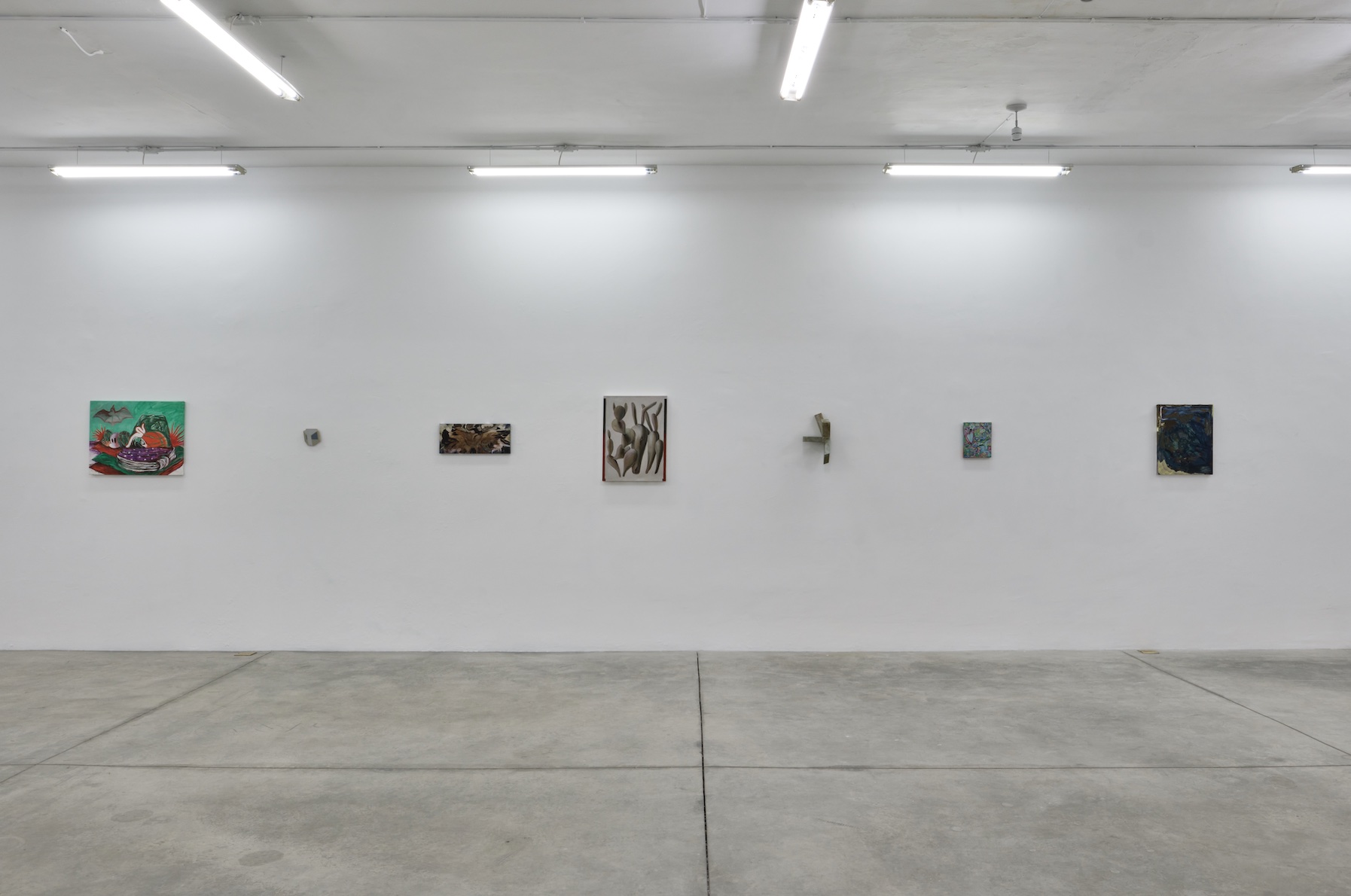
Evite apoyarse en el cristal vol.I
Exhibition
-> Feb 2 2024 – Mar 17 2024
Tiro al Blanco presents the exhibition Evite apoyarse en el cristal vol.I with works by Abraham Gonzalez Pacheco, Alonso Leon-Velarde, Andrea Márquez, Claudia Luna, Enrique Hernández*, Fernando Gress Muñoz, Garth Evans, Gill Hersom, Héctor Jiménez, Iván Estrada, Jaime Ruiz, Julián Madero Islas, Juni Aranda, Leonardo Ascencio, Luis C. Figueroa, Mariana Paniagua, Natalia Berzunza and Scott Galván.
Conversations between artists, according to painter David Salle, are a genre of art writing in itself that differs from journa- lism, which focuses on the things that surround the work, such as the market, the public, etc., and also differs from criti- cism, which sustains its legitimacy in the field of theory. Talking nonsense among artists while seating at a table without a cup holder with a pile of cigarette butts in some recycled receptacle, outside of endless scrolling in art blogs and for- gotten articles in indexed journals, implies talking on a microscopic scale about what works and what doesn’t work in the process of making a cultural product (meaning “work of art”).
Very weak figuration. Virtuoso figuration. Obsessive or lazy abstraction, aguarrás or turpentine? I like to say aguarrás —one tube of the cheapest oil I have please—.
“Evite apoyarse en el cristal” (in english Avoid Leaning on the Glass) is an instruction given by an inanimate object, the su- bway window, for example, to whoever is observing the scratches made with acid, a stone or some sharp object on the window, which generate a composition of elements that do not respond to a single will, and are superimposed on each other with the passage of time. Outside of this hypothetic window, the names of the most relevant street writers of the last three decades can be seen adorning Cristobal Colon Avenue in Guadalajara, or Tlalpan Avenue in Mexico City, in the form of graffiti that pile up in a similar way. The title of this exhibition is an instruction that appears from careful observa- tion in an unconventional space for pictorial exploration.
—...exactly, the density of the layers is as much texture as putting big masses on top of the fabric, in the end it is volume, only much thinner—. Monotype-fresco of setting on cement. Liquid glass for a more glossy, renaissance-like finish. from before?. Yes, from before.
This exhibition arises from conversations between painters and conversations with paintings. Talking to the wall in some cases. -In fact, a lot of talking alone-. The pictorial plane and its elasticity are protagonists in this exhibition, in the sense that in some of the pieces presented, it behaves in the usual way, but in some other cases it seeks to break and/or over- flow outside the square, the nail and the wall.
A painting that visually shares traits with the American postmodernism of the seventies, but that actually works as “insta- llations that could have been a painting” (together that could have been an e-mail).
To think of painting in 2024 is to think of a painting that has been sprouting for half a century from the pandora’s box opened by Lucio Fontana —Why that one among so many painters? Where the hell is Richter?— when he cut a canvas to show us what lies beyond it, plus the knowledge that has developed around the non-material questions of the artistic object. Contemporary painting is a product and recipient of the paradigm shifts that have occurred in contemporary ar- tistic activities and this exhibition brings together some examples of this within different geographies.
— Luis F. Muñoz & Marines Salcedo, curators
*Painting Beneficiary, 2023-2026 of the Support System for Creation and Cultural Projects.